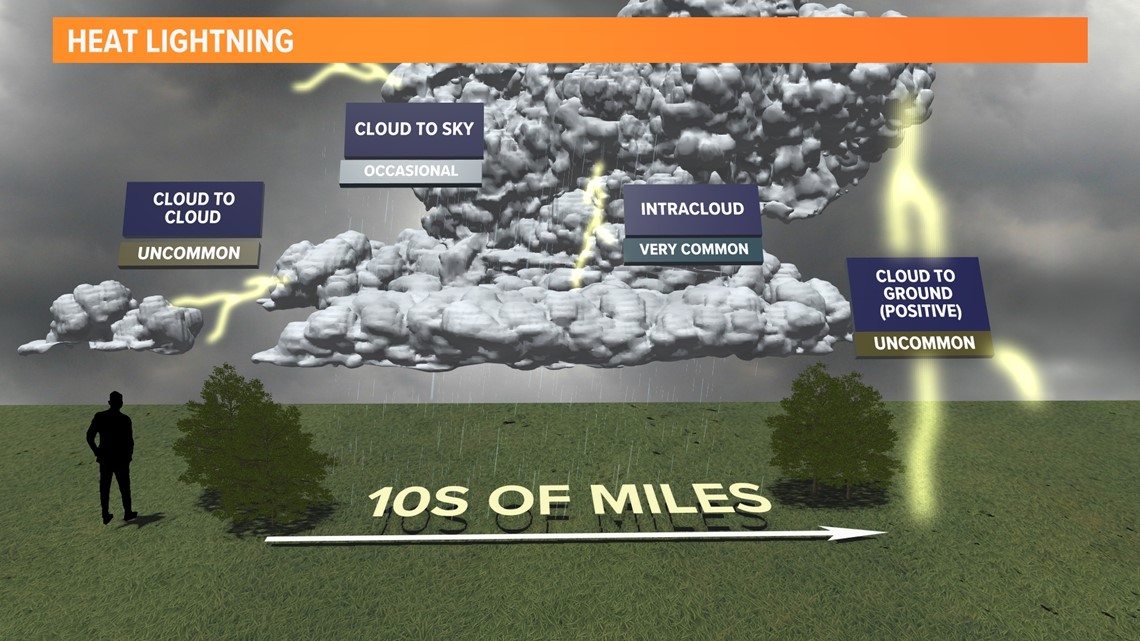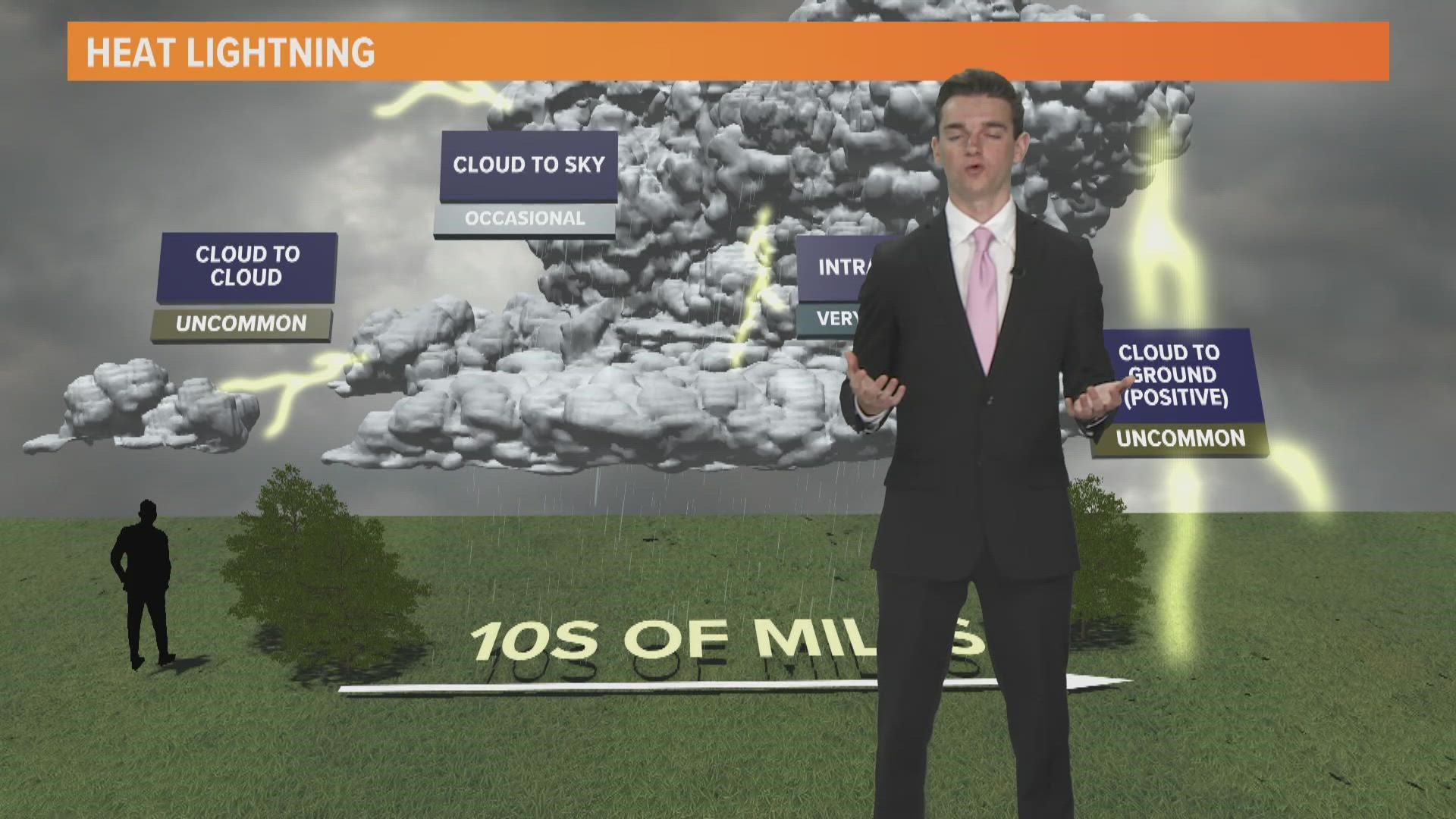MACON, Ga. — It's no secret storms typically pop up during as the temperatures rise in the summer.
These storms are typically more severe in nature as a result of the presence of vast amounts of moisture in the lower levels of the atmosphere, creating storms that can produce hail, strong winds, and lots of lightning.
Heat lightning is something that seems more common in the summertime, but you may be surprised to find out it is not exactly what you thought it was.
Defined by the National Weather Service, “heat lightning” is simply lightning from a visible thunderstorm too far away to hear the rumble of thunder or see the cloud-to-ground lightning strike.


Many believe heat lightning is lightning produced by warmer than normal temperatures or “silent lightning” that does not generate thunder. However, this is a popular misconception among many.
Usually, heat lightning is almost always visible when the Sun goes down, as lightning is much easier to spot in the night sky. This allows the typical person to observe lightning in the tops of clouds that are not visible during the daytime.
When in contrast with the night sky, lightning can be visible tens of miles away. Therefore, the physical terrain of the Earth can obstruct our view of the cloud-to-ground lightning strike.
When viewing a distant thunderstorm, things such as trees, hills, or simply the curvature of the Earth will make these lightning strikes look like flashes rather than the bolt you normally see.


The myth of this lightning not being followed by thunder is also because of the large distance between you and the lightning strike.
Light travels much faster than sound, which is why you hear thunder a few seconds after lightning. The sound waves from thunder disperse throughout the air and are absorbed by all the atmosphere’s contents.
Doing this for hundreds of miles, the sound waves are virtually gone by the time they reach our ears, or so weak that you are unable to hear them.
WHAT OTHERS ARE READING:

